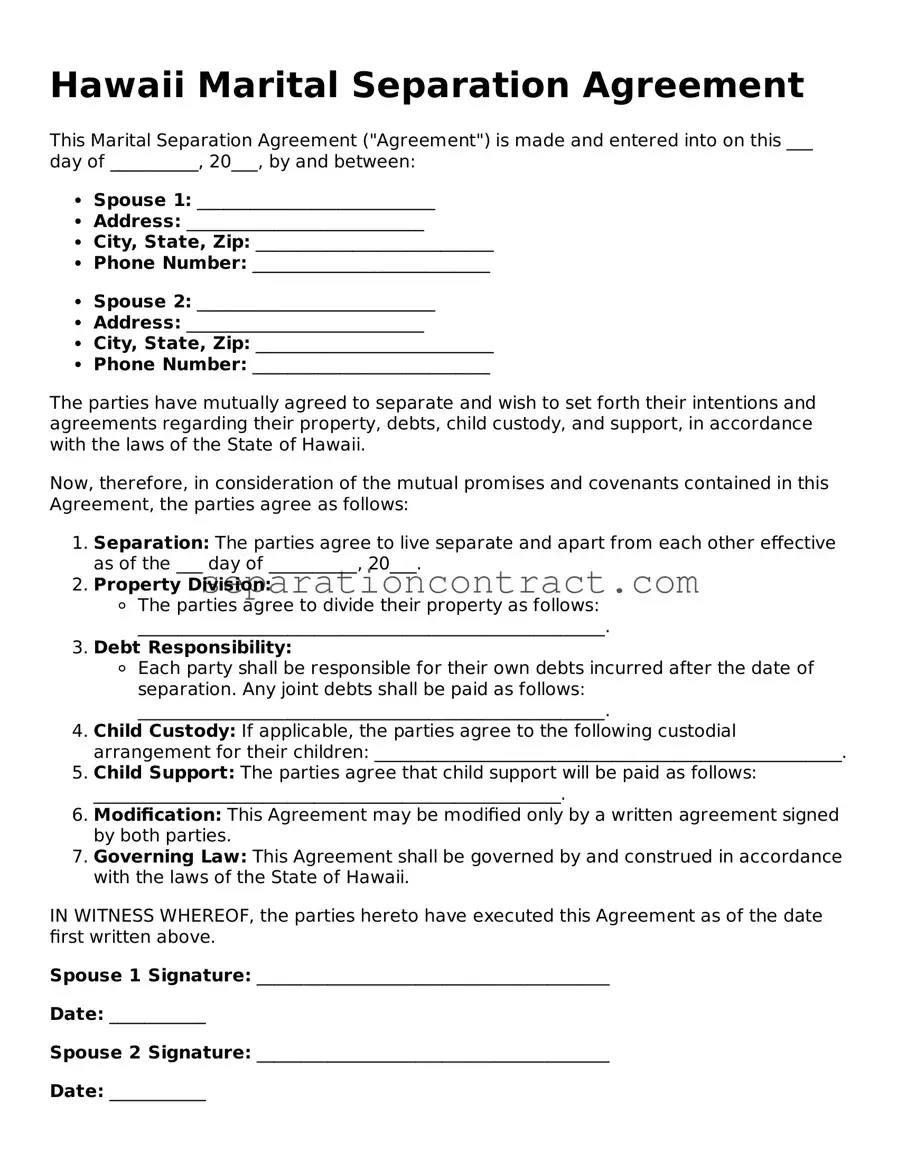Filling out the Hawaii Marital Separation Agreement form can be a complex task. Many individuals make mistakes that can lead to confusion or legal issues later on. One common error is failing to provide complete information. Each party must ensure that their names, addresses, and other personal details are accurate and fully filled out. Omitting any information can delay the process or result in the agreement being deemed invalid.
Another frequent mistake is not clearly defining the terms of the separation. It is crucial to specify how assets, debts, and responsibilities will be divided. Vague language can lead to misunderstandings and disputes in the future. Each party should take the time to articulate their expectations clearly and ensure that both parties agree on these terms.
Many people overlook the importance of including a section on child custody and support. If children are involved, the agreement should outline custody arrangements, visitation schedules, and financial support obligations. Failing to address these matters can create complications later, especially if one party wishes to modify the arrangement.
Some individuals neglect to consider tax implications when filling out the form. Certain decisions regarding asset division can have significant tax consequences. It is advisable to consult with a tax professional to understand how the separation agreement may affect future tax filings.
Another mistake is not having the agreement reviewed by a legal professional. While it is possible to fill out the form independently, having an attorney review the document can help identify potential issues and ensure that the agreement complies with Hawaii laws. This step can prevent costly mistakes down the line.
Additionally, many people fail to sign and date the agreement properly. Both parties must sign the document in the presence of a notary to make it legally binding. Without proper signatures, the agreement may not hold up in court, leading to further complications.
Lastly, individuals often forget to keep copies of the signed agreement. After the document is finalized, each party should retain a copy for their records. This ensures that both parties have access to the terms agreed upon and can refer back to them if necessary.
